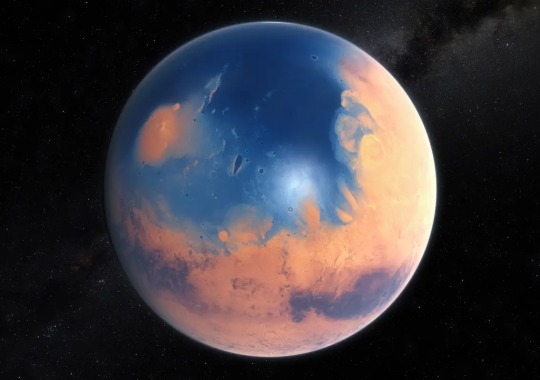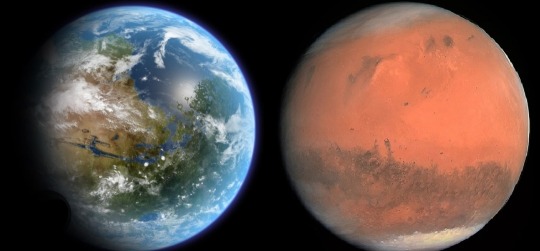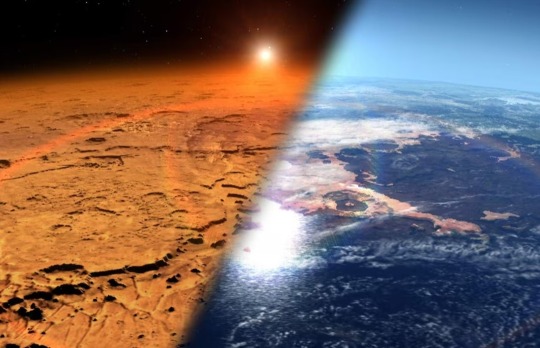#Cryosphere
Explore tagged Tumblr posts
Text
youtube
One of two Halloween surprises I have for today! The other will premiere over at @daybreak-academy-fanfic because it's a Kingdom Hearts fic, but I hope you enjoy a little slice of Mighty No. 9 in the meantime!
#podfic#mighty no. 9#mighty number 9#fanfiction#fanfic#fan fiction#fan fic#cryosphere#mighty no. 2#mighty no 2#mighty number 2#cryo#Youtube
4 notes
·
View notes
Text

SHE HAS A BAT DUDE!!! SHE HAS A LITTLE ROBOT BASEBALL BAT!!! THATS SO FUCKING CUTE!!!!!!!!!!
2 notes
·
View notes
Text

Ah, the mundane days before everything changes and becomes wholly, infinitely worse :)))
arievaal & I are slowly working (very, very slowly) on an deep-sea-but-make-it-extraterrestrial webcomic with these two except all grown up. There will be trauma (duh), both before and after the submarine
4 notes
·
View notes
Text
Elegy for the Sentinel Ice
Before any footsteps, before any cry, Ice hewed the mountains, etched earth and sky. A silent architect, cold, patient, and grand, It inscribed the planet’s memory, shaping the land. Its blinding white armor, a sentinel spun, Shielded the world from the wrath of the sun. A balance so fragile—celestial ballet— Without it, the blue world dims into gray. We are late arrivals, children of…

View On WordPress
#Climate Catastrophe#Collapse of Industrial Civilization#Cryosphere#Earth’s Legacy#Ecological Warning#Future Generations#Glacial History#Global Warming#Human Impact#Melting Ice#Nature’s Balance#Planetary Memory#The Holocene Epoch#Vanishing Glaciers
0 notes
Text
fuckkkk my major is depressing. ah yes let me just repeatedly learn over and over how fucked humanity is because of our neverending laundry list of poor choices we made again again and again. let me just do my homework that tells me how doomed we are. yes there is so much point in me submitting my assignment you have given me researching how fucked we all are. it’s not as if …. we are fucked ?? sure. here’s my homework. the worlds gonna end in a couple years, but here it is. don’t worry, it’s perfectly written. it’s all soooo interconnected, literally all a gigantic cascading pile of doom. i’m going to submit this, to graduate. graduate and enjoy my degree for the next what? few years? before we’re properly really fucked and there is no more point to the degree. it’s really an ironic feild i’ve entered myself into. gets you down after a while having some of the smartest people in the world on this subject telling you for 4+ years why there’s basically no hope.
#homework#end of the world is coming#and i have finals to do#the climate clock haunts me daily#i’m so scared#permafrost#remote sensing#cryosphere
1 note
·
View note
Text
CRYOSPHERE release new single and video “The Odyssey”
CRYOSPHERE release new single and video “The Odyssey”. #cryosphere @CRYOSPHEREBAND
“The Odyssey” is the title of the new single released by Danish alternative metal duo CRYOSPHERE. It is a tale of two separate minds melding together, wrapped in the tale of the giant Antaeus and the lesser known siren Agliopé. Referencing the old Greek mythology, CRYOSPHERE tells the story of two people coming from different worlds and yet somehow prevail together, despite being cast into a sea…
0 notes
Text
The cryosphere, which refers to the frozen parts of the planet, currently comprises almost 10% of the Earth’s surface. But as rising temperatures from human-caused emissions melt ice caps, glaciers and sea ice, it has become a percentage in decline.
“In the last two years we have lost a gigantic part of the Antarctic Sea Ice,” said Antje Boetius the director of German polar research hub, and co-Chair of the Scientific Advisory Board of the summit.
“All parts of the cryosphere, in the last three years, have exceeded the predicted range of change last forecast by the Intergovernmental Panel on Climate Change (IPCC),” she said.
It’s a loss that has potential impacts for billions of people around the world in myriad ways.
Currently at least 1.9 billion people are estimated to depend on fresh water from snow and glacier melt that is carried downstream for drinking and agricultural irrigation. As glaciers melt due to warmer temperatures, they initially release more water, but eventually supplies dwindle.
Changes in the cryosphere can alter atmospheric circulation patterns, leading to extreme snow and rainfall, which in turn can cause flash floods and glacial lake outbursts. In Pakistan, unprecedented flooding as a result of extreme monsoon rains and melting glaciers killed more than 1,700 people last summer.
More than 2 million people lost their homes and the total damage was estimated at over $15 billion (€14 billion) according to the World Bank.
Equally, as ice melts, sea levels in certain regions rise.
According to a study published in the scientific journal, Nature, the homes of up to 410 million people living in coastal areas and on low-lying islands could be affected by an increasing frequency of flooding resulting from rising seas by 2100.
Hopes for the Polar Summit in Paris
The first ever summit devoted to melting ice sheets aims to bring together researchers and scientists from over 40 glacial and polar nations to share their findings with other experts and political leaders from countries “present in the Arctic, Antarctic and glacial worlds.”
Boetius hopes the Paris meeting, which comes just before the 28th UN climate conference (COP28), will serve as a platform to convince politicians to speed up their efforts to reach climate neutrality and “absolutely engage with biodiversity goals.” She says the loss of Antarctic sea ice has already prevented breeding in some penguin colonies.
Other species are also at risk of habitat loss due to melting ice.
The extinction of the world’s mountain glaciers
“The best outcome of the summit would be for the heads of state present to make a clear statement and communicate the urgency of absolutely committing to the Paris climate goals,” Boetius said.
The central aim of the Paris Agreement, a legally binding international treaty on climate change signed by 195 parties, is to keep global temperatures well below 2 degrees Celsius, and pursue efforts to limit the increase to 1.5 degrees above pre-industrial levels.
Boetius is also calling for agreement on greater scientific research “to beat the pace of crysopheric change,” thereby allowing countries and communities to be better prepared in the face of glacier collapse and unpredictable snowfall.
“Even well-adapted countries like Norway have lost people time and again,” she said. “There is no scaled-up risk monitoring, risk assessment and risk warning for people.”
Citing international cooperation on tsunami early-warning systems in Indonesia, Boetius said a similar approach could be used to predict extreme precipitation, that could save lives and protect against property damage.
Pressure to reduce emissions
Ahead of the summit, NGOs published a six-page letter urging leaders of participating countries to accelerate efforts to reduce greenhouse gas emissions, implement biodiversity frameworks and strengthen protection and conservation in polar regions and high mountains.
The letter emphasized the need for transparent monitoring efforts and the involvement of the international community to raise awareness of glacier conservation.
“There’s a lot of excitement about opening up the Arctic to shipping, to resource extraction, to all kinds of development,” said Jan Dusik, senior lead of the Arctic Governance Program with conservation organization WWF.
“This summit will hopefully help to create more protected areas and make sure we don’t get into adventures like deep-sea mining,” he said.
He said the establishment of a network of marine and terrestrial protected areas in both the Arctic and Antarctic, as well as in high mountains, must be based on the best available science and knowledge from Indigenous communities.
0 notes
Text
Polar Vortex‘s lore part 1: the ice kingdom
#wings of fire#wof#wof memes#icewings#Polar Vortex(oc)#Cinnamon(oc)#Mistletoe(oc)#Silver(oc)#Toboggan(oc)#Killer Whale(oc)#Cryosphere(oc)#wof oc#tw gun#tw gun mention#cw guns#cw gun mention#tw implied child abuse#tw implied abuse#tw child abuse#tw childhood trauma#cw implied abuse#cw implied child abuse#cw child abuse#cw childhood trauma#tw blood#cw injury#tw injury#cw blood#tw implied swearing#cw implied swearing
21 notes
·
View notes
Text
Call it "climate change karma".
One industry which will be hurt by rising sea levels caused by climate change is the oil industry. 🙂
Rising sea levels driven by the climate crisis will overwhelm many of the world’s biggest oil ports, analysis indicates. Scientists said the threat was ironic as fossil fuel burning causes global heating. They said reducing emissions by moving to renewable energy would halt global heating and deliver more reliable energy. Thirteen of the ports with the highest supertanker traffic will be seriously damaged by just 1 metre of sea level rise, the analysis found. The researchers said two low-lying ports in Saudi Arabia – Ras Tanura and Yanbu – were particularly vulnerable. Both are operated by Aramco, the Saudi state oil firm, and 98% of the country’s oil exports leave via these ports. The oil ports of Houston and Galveston in the US, the world’s biggest oil producer, are also on the list, as are ports in the United Arab Emirates, China, Singapore and the Netherlands. The latest science published by the International Cryosphere Climate Initiative (ICCI) shows 1 metre of sea level rise is now inevitable within a century or so and could come as early as 2070 if ice sheets collapse and emissions are not curbed.
We would hope that the oil companies would be out of business by 2070. But greed is a powerful incentive to continue damaging behavior.
Murray Worthy, of Zero Carbon Analytics, who is part of the team, said: “This analysis shows that relying on fossil fuels in a warming world is a path to disaster, not energy security. Countries face a choice: stick with fossil fuels and risk supply disruptions as rising seas flood ports and terminals, or transition to secure, sustainable domestic renewables.”
#fossil fuels#climate change#oil ports#big oil#rising sea levels#the climate crisis#international cryosphere climate initiative#zero carbon analytics#donald trump#drill! drill! drill!#climate change karma#irony
2 notes
·
View notes
Text
भारताकडून हिमनदी संवर्धनाप्रति आपल्या वचनबद्धतेचा पुनरुच्चार
दुशान्बे येथे झालेल्या उच्चस्तरीय आंतरराष्ट्रीय परिषदेत भारताकडून हिमनदी संवर्धनाप्रति आपल्या वचनबद्धतेचा पुनरुच्चार2025 हे आंतरराष्ट्रीय हिमनदी संवर्धन वर्ष तर 2025 -2034 हे दशक क्रायोस्फेरिक सायन्सेससाठी कृती दशक म्हणून घोषित नवी दिल्ली – केंद्रीय पर्यावरण, वने आणि हवामान बदल राज्यमंत्री कीर्ती वर्धन सिंह यांनी 29 ते 31 मे 2025 दरम्यान ताजिकिस्तान मधील दुशान्बे येथे हिमनदी संवर्धनावरील…
#२०२५#2025#Climate Change#climate resilience#cryosphere decade#cryospheric sciences#Dushanbe summit#environmental diplomacy#environmental policy#environmental summit#glacier conservation#glacier melting#global ice#Global warming#Himalayas#ice preservation#India climate commitment#India environment#international year#permafrost#polar regions#scientific action decade#snow science#sustainability#UN declaration#water security#आंतरराष्ट्रीय पातळी#आंतरराष्ट्रीय वर्ष#क्रायोस्फेरिक सायन्सेस#जागतिक तापमानवाढ
0 notes
Text
December 2023 reading - so how did that go??? 😬
At the end of any December, I tend to do one big round up post of the month and the year, together with plans for the new year; however, because of the hand fate dealt us this Christmas (COVID!) I’ve decided to subdivide and do some shorter posts! So here’s the first one, a brief look at what I read in December 2023 – and brief is the right word, because my reading has gone from the sublime in…

View On WordPress
#charles dickens#lessons in stoicism#maeve brennan#patti smith#philip lopate#simon armitage#the chimes#the cryosphere
1 note
·
View note
Text


wang yibo - world day for glaciers
In the face of the urgent situation of the rapid melting of the cryosphere caused by global climate change, the United Nations General Assembly officially passed a resolution in December 2022, declaring 2025 as the International Year of Glacier Protection. Starting from 2025, March 21st of each year will be World Glacier Day. In February 2025, the Publicity and Education Center of the Ministry of Ecology and Environment, together with Climate Communication Ambassador Wang Yibo @UNIQ-王一博, and the Tianjin Extreme Climate Change Promotion Center, went to the Renlongba Glacier in Tibet at an altitude of more than 5,000 meters to complete scientific expedition tasks such as ice core drilling and ice and snow sample collection, and called on Chinese youth to pay attention to climate change and protect our glaciers with practical actions.
In 2025, the International Year of Glacier Protection, let us work together to make the earth cooler!
47 notes
·
View notes
Text
DID MARS EVER CONTAIN WATER??
Blog#428
Saturday, August 17th, 2024.
Welcome back,
While the icy moons of Jupiter and Saturn contain water, Mars remains dry. Despite dozens of space missions, the Red Planet has yet to provide convincing proof that it conceals significant water reserves beneath its surface.
Yet Earth's little cousin hasn't always been so secretive. Various studies have shown that a little over 4 billion years ago, it experienced a "watery" era when lakes, rivers and perhaps even oceans could maintain themselves on its soil. Branching valleys and ancient terrains rich in hydrated clays are evidence of this blissful period of abundance.

Subsequently, the loss of part of the Martian atmosphere led to a reduction in the greenhouse effect followed by a gradual disappearance of water. The question is how long this process lasted and under what conditions. This is what the American Space Agency's (NASA) Curiosity and Perseverance spacecraft have been trying to establish since their arrival in 2012 and 2021 in the Gale and Jezero craters.

"Lakes occupied these depressions 3.5 or 3.6 billion years ago," explained Nicolas Mangold, a director of research at the French National Center for Scientific Research (CNRS) Laboratory of Planetology and Geosciences in Nantes.
By studying the sedimentary and clay deposits left by the former and exploring the ancient river delta that fed the latter, the aim is to determine whether the climate at the time was wet and cold, or dry and hot. The Perseverance rover is also collecting samples, to be brought back to Earth as part of the MSR mission [Mars Sample Return, NASA-European Space Agency (ESA)]. They should provide precise information."

For the moment, things are hazy. If water has flowed on Mars, where has it gone? Was it sucked up into space with the Martian atmosphere or did some of it remain on site, buried underground? Many teams around the world are working to find answers by searching for clues to its presence other than those offered by polar ice caps and glaciers.
As water cannot remain in a liquid state for long on the surface of Mars, these investigations often consist of spotting recent traces of its passage using instruments placed in orbit. This opens the way to all kinds of controversy about how to interpret observations of this world, whose morphology is radically different from that of Earth. "Some of these controversies, such as those concerning gullies – ravines 1 or 2 kilometers long, discovered by the hundreds along certain landforms in the early 2000s – have finally been settled," said Susan Conway, a CNRS researcher at the Laboratory of Planetology and Geosciences in Nantes.

Her team recently demonstrated in the journal Nature Communications that seasonal deposits of dry ice explain the phenomenon, and not water flows.
Other clues continue to fuel debate and even controversy among scientists. The nature of "equatorial dark flows," the background noise of radar signals suggesting the existence of an underground sea beneath the North Cap, the presence of possible channels in the ejecta of impact craters and the hypothetical formation of "rides" in areas of glacial retreat. If water exists on Mars, it is well camouflaged.

Why not deep underground, frozen in the cryosphere? Or preserved in liquid form in aquifers, or inside the thin film of perchlorate brine that supposedly exists at the base of the permafrost that covers Mars at high latitudes? The Marsis and Sharad radars of the Mars Express (ESA) and MRO (NASA) probes have pinpointed promising regions. And when NASA's Phoenix lander dug a few centimeters into the frozen ground just after it arrived in 2008, it immediately uncovered blocks of water ice – a further reason for hypothesis and speculation.
Originally published on https://www.lemonde.fr
COMING UP!!
(Wednesday, August 21st, 2024)
"DID LIFE EXIST ON VENUS??"
#astronomy#outer space#alternate universe#astrophysics#universe#spacecraft#white universe#space#parallel universe#astrophotography
81 notes
·
View notes
Text
This article is about the rogue planet. For the mythological figure, see Icarus (mythology). For other uses, see Icarus (disambiguation).
Icarus was an icy rogue planet discovered in 2024. It is thought to have been ejected from its unknown home star 2.6 billion years ago. From early 2071 to late 2075, Icarus was present in the solar system, and was often visible to the naked eye. Of the lifeforms endemic to Icarus, only four hundred and seven species—an estimated .000005%—were documented by scientists. Of Icarus’ sapient lifeforms, only one living Singer (Icarus Sapiens) has been successfully returned to Earth.
Initially, interest in Icarus was predominantly limited to the scientific community once it was announced in 2025 that Icarus would not directly threaten Earth as it passed through the solar system. However, after the 2031 CLARITY mission, when liquid water and potential biosignatures were first detected beneath Icarus’ cryosphere, funding towards the exploration of Icarus rose significantly.
First Contact
Before the 2052 Daedalus landing site was established, popular consensus was that the first alien lifeforms humanity met would be technologically superior. However, the first Singer settlement discovered by the Daedalus crewed submersible was a tribal society formed within the decaying corpse of a Large-bodied Tenor (Mellifluus Civitas). The settlement, best translated as “Distortion of Sound in Warm, Rising Water”, was chosen due to its proximity to the Daedalus drill site; gas bubbles in the body caused by decomposition allowed Distortion to float approximately two kilometers above the surface of the ocean floor.
Although initial protocol for the Daedalus crew was to avoid contact, the crew did not anticipate the precision and sensitivity of Singer echolocation, and were swiftly detected. Despite initial concerns of conflict, with the assistance of the Daedalus AI’s linguistic analysis, tentative contact was established. By 2053, the Daedalus crew had established a basic understanding of Singer biology and the culture of Distortion.
The largest barrier to communication was the nature of Singer language. The primary Singer sense was their echolocation; as they evolved sapience, Singers learned to communicate by mimicking the sounds they heard when echolocating certain objects. Several Singer “words” well-known to popular culture include: the sound of a pod of Singers migrating (lit. “family”); the faint echoes produced by calling into empty water (lit. “loneliness”); and the high-pitched hum of the Daedalus propellers (lit. “impotent gods”).
The Massacre of Worms
Of utmost importance was successfully communicating to the Singers that Icarus was on a collision course with the Sun, and would be entirely destroyed by 2076. Even in 2053, the ice sheet which covered Icarus was already beginning to sublimate under the increased temperature. As there existed no word for fire, sun, or stars in the Singer language, a warning that their world would soon decay (lit. the sound of flesh devoured by worms, growing louder and coming from all directions) was transmitted to the citizens of Distortion of Sound in Warm, Rising Water.
In what is now known as the Massacre of Worms, the entirety of the Singer village immediately attempted to attack the Daedalus submersible. At the time, the mechanism by which Singers communicated was still poorly understood, but interviews and brain scans of the Last Singer have confirmed that Icarus Sapiens experience a species-wide condition similar to human synesthesia. In order to convert the feedback from their echolocation into useable information about their spatial environment, Singers evolved the ability to “see” sounds as hallucinated physical objects. As such, every word spoken by a Singer produces a corresponding illusory image in the mind of every Singer who hears it. Unfortunately, the warning delivered by the Daedalus submersible manifested as an imploding sphere of rotting flesh centered on the village of Distortion, and was interpreted as an attack. The Daedalus submersible sustained little damage, but out of fear that the Distortion villagers would sour relations with other Singer societies, released hypochlorous acid clouds to calm the attackers; it was believed that high concentrations of hypochlorous acid would cause the Singers to become lethargic and contented, as if they had recently consumed a filling meal. Unfortunately, due to a poor understanding of Singer biochemical sexual dimorphism, the chemicals released resulted in the deaths of nearly half of the Distortion villagers.
Through great difficulty, it was conveyed to the surviving Distortion villagers that the Massacre of Worms was a mistake, but the remaining Singers refused further contact with the Daedalus crew. Although a second attempt to halt the spread of negative rumors in Singer society was considered, the disastrous failure of the first attempt caused no action to be taken.
Termination of the Daedalus Mission
Swiftly following the Massacre of Worms came a breakthrough in solar magnetohydrodynamics, and with it, the alarming discovery that the collision of Icarus with the sun would cause a solar storm, which would deal trillions of dollars of damage to the economy. Negative press surrounding the Daedalus crew, as well as the importance of hardening the global power grid against the solar flare, caused funding for the Daedalus expedition to be cut, and the mission slated to end in 2060.
In an effort to preserve as much of Icaran life and culture as possible, the Daedalus crew attempted to make contact with and offer salvation to as many diverse Singer settlements as they could. At the peak of their efforts, in 2059, they had made contact with nineteen different Singer settlements around the planet, and although the Daedalus crew’s claims of planetary destruction were met with widespread skepticism, sixteen of them agreed to send representative Singers back to Earth. Unfortunately, four weeks before the launch date, when the Singer representatives were brought together, hitherto-unknown cultural conflicts between the Singer settlements the Daedalus crew had contacted caused the Singers to devolve into physical combat. A still-shoddy understanding of Singer biology led to the Daedalus crew being unable to save most of the Singers injured in the brawl. In the end, only one Singer survived the destruction of Icarus.
See also:
National Icaran Zoo
Icarus in popular culture
Consumption of Icaran lifeforms by country
Death of the Last Singer
(psst, I write more stuff here!)
114 notes
·
View notes
Text

In response to the urgent situation of rapid melting of the cryosphere caused by global climate change, the United Nations General Assembly formally adopted a resolution in December 2022 declaring 2025 as the International Year of Glacier Conservation. Starting from 2025, World Glacier Day will be observed on 21 March each year.
In February 2025, the Publicity and Education Center of the Ministry of Ecology and Environmental Protection, together with the Climate Communication Ambassador @UNIQ-王一博 and young researcher @温旭PolarWen, and the Tianjin Extreme Climate Change Response Support Center @极地未来PolarHub, went to the Renlongba Glacier in Tibet, which is more than 5,000 meters above sea level, to carry out scientific expedition tasks such as drilling ice cores and collecting ice and snow samples, and took practical actions to encourage Chinese youth to pay attention to climate change and protect our glaciers.
Src: 极地未来PolarHub
23 notes
·
View notes
Text


“A new study led by Jochen Knies from the iC3 Polar Research Hub has found worrying signs that climate change may be undermining the capacity of Arctic fjords to serve as effective carbon sinks.”
12 notes
·
View notes